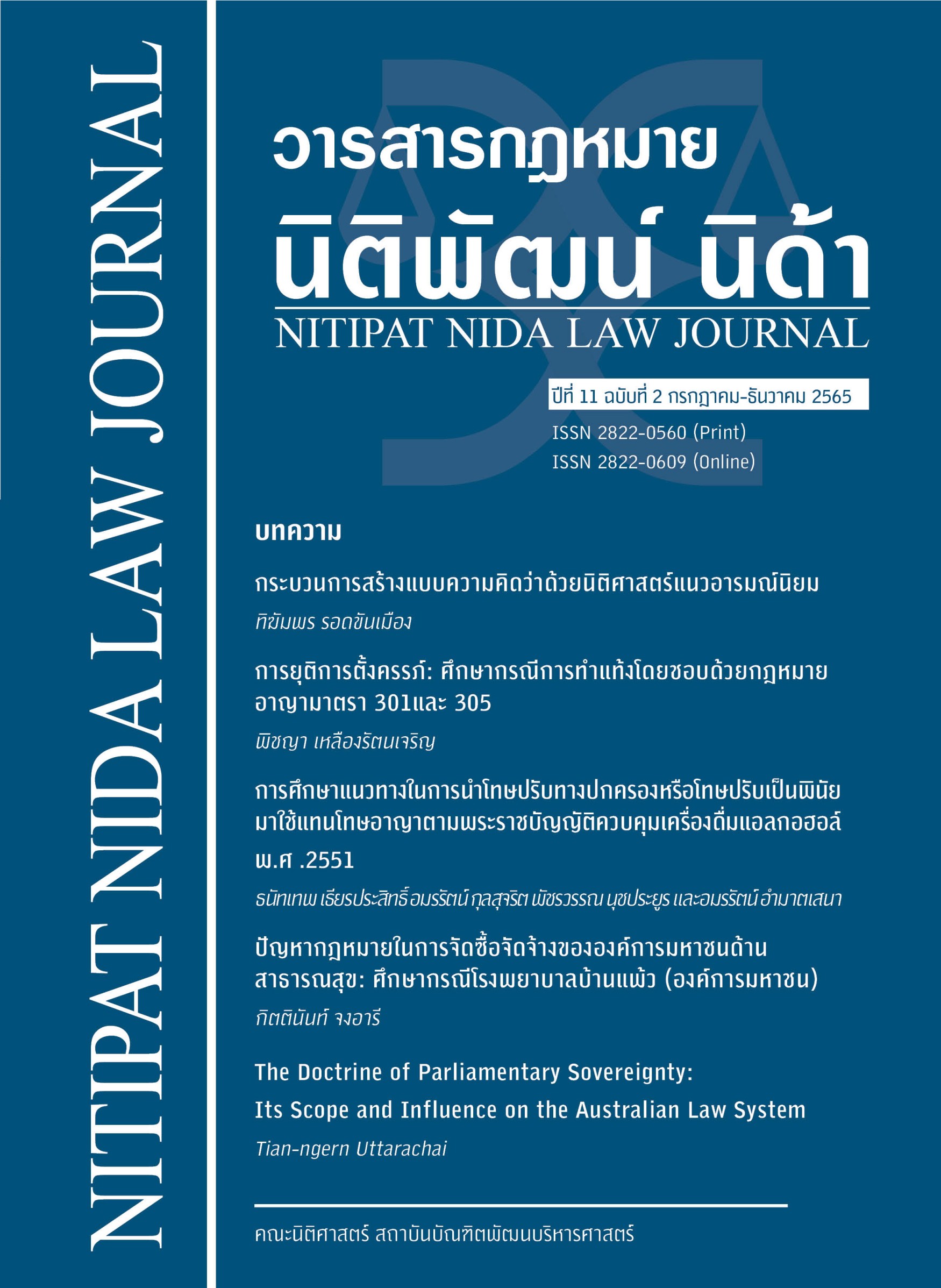The Doctrine of Parliamentary Sovereignty: Its Scope and Influence on the Australian Law System
Keywords:
Doctrine of Parliamentary Sovereignty, Constitutional Law, Australian Constitution, Legislative PowerAbstract
This article conducts a study on the theory of parliamentary sovereignty which is a basic principle in the constitutional law of the former countries of the British Empire. This principle establishes that parliament has absolute sovereignty and is superior to the executive and judiciary. Therefore, Parliament has unrestrained legislative authority, and the Court cannot question the constitutionality of parliamentary acts. Australia being a British colony has undoubtedly been affected by this concept. However, Australia gained a written constitution from the Imperial Parliament; consequently, it is impossible to apply traditional parliamentary sovereignty in Australia. It has been demonstrated that the Commonwealth parliament's powers are constrained because it was founded by the federal constitution and was granted legislative authority according to the Constitution. The states’ legislative powers are restricted by the Commonwealth Constitution, the state constitutions, and some of the Commonwealth’s powers. Thus, neither the Commonwealth nor the state parliaments in Australia have the legislative supremacy to enact or alter laws without restriction. Regardless of the fact that parliaments in Australia are not truly sovereign, parliamentary sovereignty has continued to have a significant impact on the Australian legal system, particularly as it relates to legal interpretation and statutory human rights protection.
References
Attorney General for New South Wales v Threthowan [1932] AC 526.
Australian Act 1986.
Barnett, Hiliaire, Understanding Public Law (Routledge-Cavendish 2010).
Blackshield, Tony and George Williams, Blackshield and Williams Australian Constitutional
Law and Theory: Commentary and Materials (5th edn, The Fedaration Press 2010).
British Railways Broad v Pickin [1974] AC 765.
Broadbent, Graeme, Public Law Directions (Oxford University Press 2009).
Building Construction Employees and Builders’ Laborers Federation v Minister for Industrial
Relations (NSW) 7 NSWLR 372.
Cannon, Andrew J., Lessons from the Australian Constitution, Worlds of Law: Foundations
and Intersections (Lit-verlag 2008).
Carney, Gerard, 'An Overview of Manner and Form in Australia' (1989) 5 QLD. University of
Technology Law Journey 69.
Clark, David, Principles of Australian Public Law (2nd edn, LexisNexis Butterworths 2007).
Colonial Laws Validity Act 1865 (Imp).
Constitution of Commonwealth of Australia Act 1900.
Constitution Act 1902 (NSW).
Ellen Street Estates v Minister of Health [1934] 1 KB 590.
Goldsworthy, Jeffrey, The Sovereignty of Parliament : History and Philosophy
(Oxford University Press 1999).
Hanks, Peter, Patrick Keyzer and Jennifer Clake, Australian Constitutional Law : Materials and Commentary (7th edn, LexisNexis Butterworths 2004).
Howard, Nick, Beginning Constitutional Law (Routledge 2013).
Human right Act 2004 (ACT).
Jackson v Attorney-General [2005] All ER (D) 136.
Julie Debeljak, The Human Rights Act 1998 (UK): The Preservation of Parliamentary
Supremacy in the Context of Rights Protection, 9 AUSTRALIAN JOURNAL OF HUMAN
RIGHTS 183(2003).
Kable v Direction of Public Prosecutions (NSW) (1996) 189 CLR 51.
Kartinyeri v Commonwealth (1998) 195 CLR 337.
Leyland, Peter, The Constitution of the United Kingdom (Hart Publishing, 2nd ed, 2011)
R v Burah (1878) 3 App Cas 889.
R v R [1992] 3 WLR 767.
Taylor, Julie, 'Human Rights Protection in Australia : Interpretation Provisions and Parliamentary.
Supremacy' (2004) 32 Federal Law Review 57.
Saunders, Cheryl and Anna Dziedzic, 'Parliamentary Sovereignty and Written Constitutions in
Comparative Perspective' in A Welikala (ed), The Sri Lankan Republic at 40: Reflections
on Constitutional History, Theory and Practice, (Centre for Policy Alternatives 2012).
Statute of Westminster 1931 (Imp).
Downloads
Published
How to Cite
Issue
Section
License
Copyright (c) 2022 Nitipat NIDA Law Journal

This work is licensed under a Creative Commons Attribution-NonCommercial-NoDerivatives 4.0 International License.



